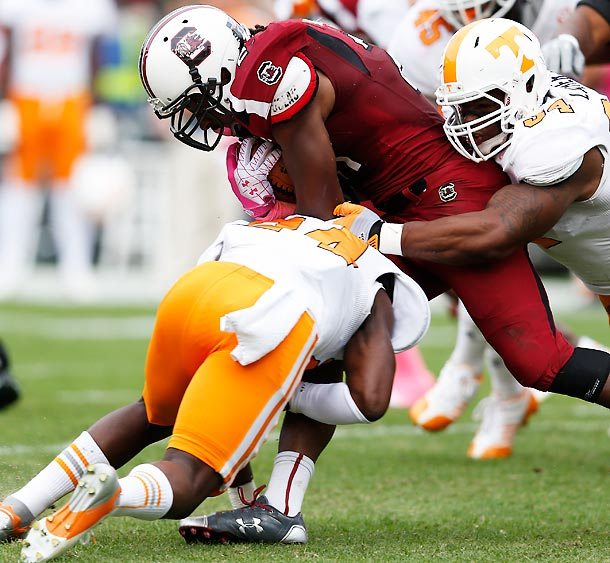There isn’t a more controversial rule in college football than that of the “targeting” rule. It was meant as a move to help stop some of the concussive and subconcussive hits in the game.
With the growing knowledge of the long-term affects of multiple concussions and CTE, getting proactive seemed like a smart move. However, a study released on Saturday suggests that the new “targeting” rules have had unintended consequences — more lower-body injuries in the game.
A study from the American Orthopaedic Society for Sports Medicine’s (AOSSM) looked at the injuries that have occurred since the beginning of the “targeting” rule in NCAA football and its conclusions are very interesting to say the least.
“Nearly a third of all concussions in collegiate athletics occur during football. With the relatively recent rule changes, concussion rates have not decreased. Our analysis of the NCAA Injury Surveillance Database though noted increased rates of ankle and knee injuries, which may result in osteoarthritis and disability issues later in life for these athletes. Athletes may be making contact lower on the body, to avoid the head-to-head contact and thus stiffer game penalties.”
Those were the words of lead author Robert Westermann, MD from the University of Iowa, highlighting a true “damned if you do, damned if you don’t” scenario for the NCAA.
Protecting head injuries has become all the rage given the dire consequences of those injuries. The suicide of Junior Seau and Mike Webster’s long fight to bring attention to head injuries in football (both were diagnosed post-death with CTE) have shown a bright spotlight on the issues of head trauma in the game.
However, it appears there’s at least a coincidental increase in lower-body injuries since the obsession with head injuries took over the football world and the college game reacted with its rule changes.
As the study points out:
Overall, 2,400 lower extremity injuries were reported during those time periods, with the most occurring to the knee (33.6%) and ankle (28.6%). Fifty-nine percent of the injuries were due to player contact. Non-contact/overuse injuries did not increase during the time studied.
The lack of increase due to non-contact injuries is the significant part of this, as it signals something else is contributing to the issue.
Are players targeting the lower part of the body more frequently to avoid potential “targeting” calls? That much isn’t clear given the short time frame available for study, but it is clear this is an issue the game also needs to be looking at going forward.
“Our research is the first to report trends in injury patterns since “targeting” rule changes took effect. Continued surveillance to examine these trends, and a more in-depth examination of how targeting rule changes are impacting injuries both at the targeted site and at other parts of the body needs to be performed to prevent long-term health issues,” said Westermann.
If you have players walking around with more and more ankle and knee injuries it makes it just as difficult to play the game as with repetitive head injuries.
[International Business Times]







